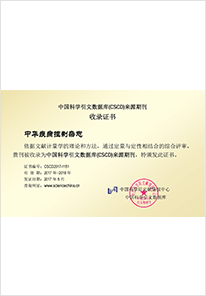2023 Vol. 27, No. 11
Display Method:
2023, 27(11): 1241-1246.
doi: 10.16462/j.cnki.zhjbkz.2023.11.001
Abstract:
2023, 27(11): 1247-1253.
doi: 10.16462/j.cnki.zhjbkz.2023.11.002
Abstract:
2023, 27(11): 1254-1261.
doi: 10.16462/j.cnki.zhjbkz.2023.11.003
Abstract:
2023, 27(11): 1262-1267.
doi: 10.16462/j.cnki.zhjbkz.2023.11.004
Abstract:
2023, 27(11): 1268-1273.
doi: 10.16462/j.cnki.zhjbkz.2023.11.005
Abstract:
2023, 27(11): 1274-1281.
doi: 10.16462/j.cnki.zhjbkz.2023.11.006
Abstract:
2023, 27(11): 1296-1299.
doi: 10.16462/j.cnki.zhjbkz.2023.11.009
Abstract:
2023, 27(11): 1300-1307.
doi: 10.16462/j.cnki.zhjbkz.2023.11.010
Abstract:
2023, 27(11): 1308-1313.
doi: 10.16462/j.cnki.zhjbkz.2023.11.011
Abstract:
2023, 27(11): 1314-1319.
doi: 10.16462/j.cnki.zhjbkz.2023.11.012
Abstract:
2023, 27(11): 1320-1328.
doi: 10.16462/j.cnki.zhjbkz.2023.11.013
Abstract:
2023, 27(11): 1329-1335.
doi: 10.16462/j.cnki.zhjbkz.2023.11.014
Abstract:
2023, 27(11): 1336-1341.
doi: 10.16462/j.cnki.zhjbkz.2023.11.015
Abstract:
2023, 27(11): 1342-1349.
doi: 10.16462/j.cnki.zhjbkz.2023.11.016
Abstract:
2023, 27(11): 1350-1353.
doi: 10.16462/j.cnki.zhjbkz.2023.11.017
Abstract:
2023, 27(11): 1360-1364.
doi: 10.16462/j.cnki.zhjbkz.2023.11.019
Abstract:


 Email alert
Email alert RSS
RSS Abstract
Abstract HTML
HTML PDF
PDF





